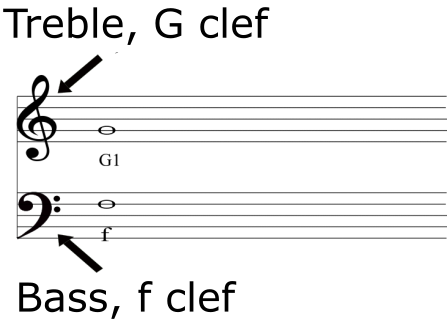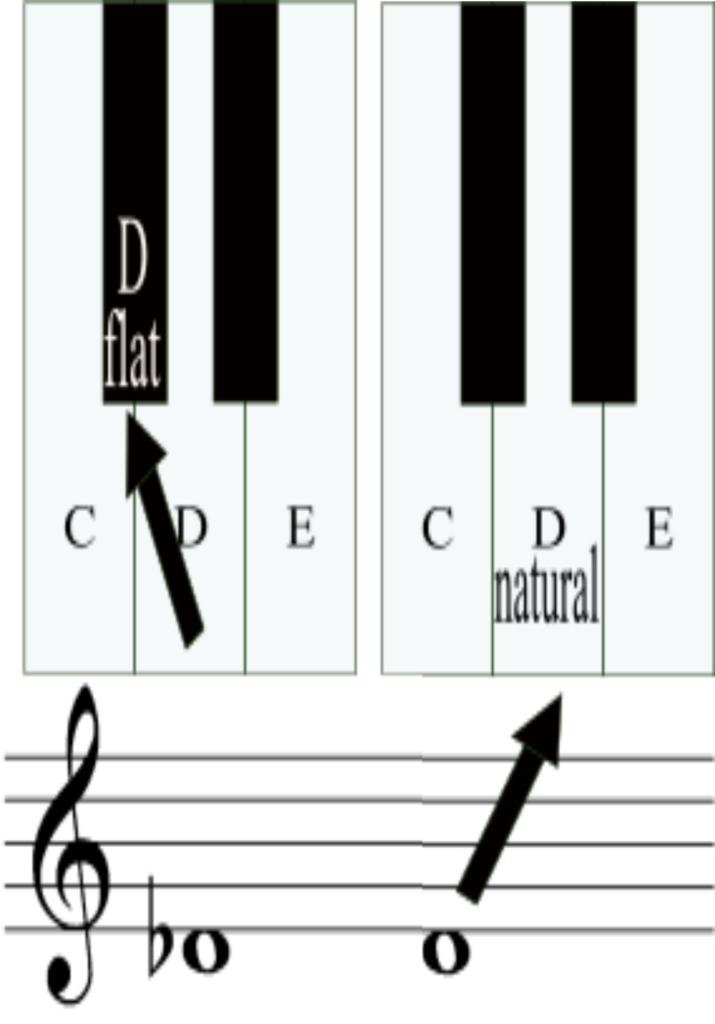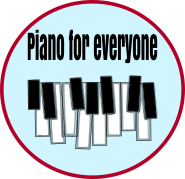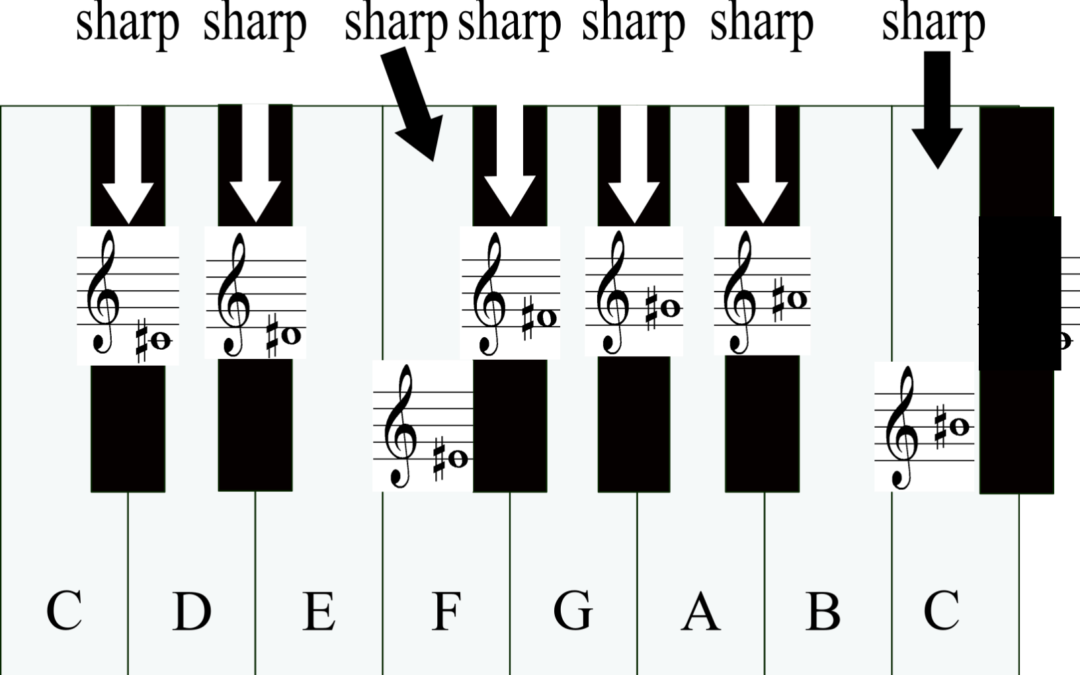In this article, I will explain to you all the basic things you need to know about music notes to help you be able to read and write music notation. You will see where we write music, what musical signs affect note names, their position on the piano keyboard, and other important staff.
Naming notes
Music is made out of fixed pitches produced on different instruments or sang by singers. These pitches have a different sound (or color) depending on the instruments that produce them. They all have names. Notes are named after the first seven letters of the alphabet: A, B, C, D, E, F, and G.
But when we sing, we name them differently, with : DO, RE, MI, FA, SOL, LA, and TI.
Staves and clefs
Music is written down on five lines and four spaces called staff or staves. We count them from the bottom to the top and each line or space represents one note.

To name notes properly, we have the clef sign placed at the beginning of every stave. There are a few different types of clef, but the two most common clefs are treble and bass clef.

Treble or “G” clef, is used for notes in the higher register. We start to write the “G” clef from note G1, and that’s why it’s called the “G” clef.
Bass or “F” clef, is used for notes in the lower register. We start to write the “F” clef from note “F” small, and that’s why it’s called the “F” clef.
Ledger lines
Sometimes it’s necessary to write notes higher or lower than those written in the stave. That’s when we use ledger lines. Ledger lines are short lines added above or below the stave.

Sharps, flats, and naturals
A sharp raises the pitch of a note to a semitone, and a flat lowers the pitch of a note to one semitone. A natural cancels the effect of a sharp or flat.


If we place sharp in front of note C, note C becomes C sharp, and it’s played on the nearest (black) key to the right. It is the same with other notes: D becomes D sharp, F becomes F sharp, G becomes G sharp, A becomes A sharp. Notes E and B are a bit different. If we raise the note E, it becomes E sharp, it will be played on the nearest key to the right, and in this particular case it is a white key, a place where we would play note F. The situation is similar with the note B. And if we raise the note B, it becomes B sharp, it will be played on the nearest key to the right, and also in this case it is a white key, a place where we would play note C.

If we place flat in front of note B, note B becomes B flat, and it’s played on the nearest (black) key to the left. It is the same with other notes, D becomes D flat, E becomes E flat, G becomes G flat, A becomes A flat. But things are a bit different with note C. If we lower the note C, it becomes C flat, it will be played on the nearest key to the left, and in this case, it is a white key, a place where we would play note B. It’s similar with note F. If we lower the note F, it becomes F flat, it will be played on the nearest key to the left, and in this particular case, it is a white key, a place where we would play note B.

If you have any questions about musical rhythm, feel free to send me a message, and I’ll answer you ASAP.
If you liked this post, please follow us on social media.

